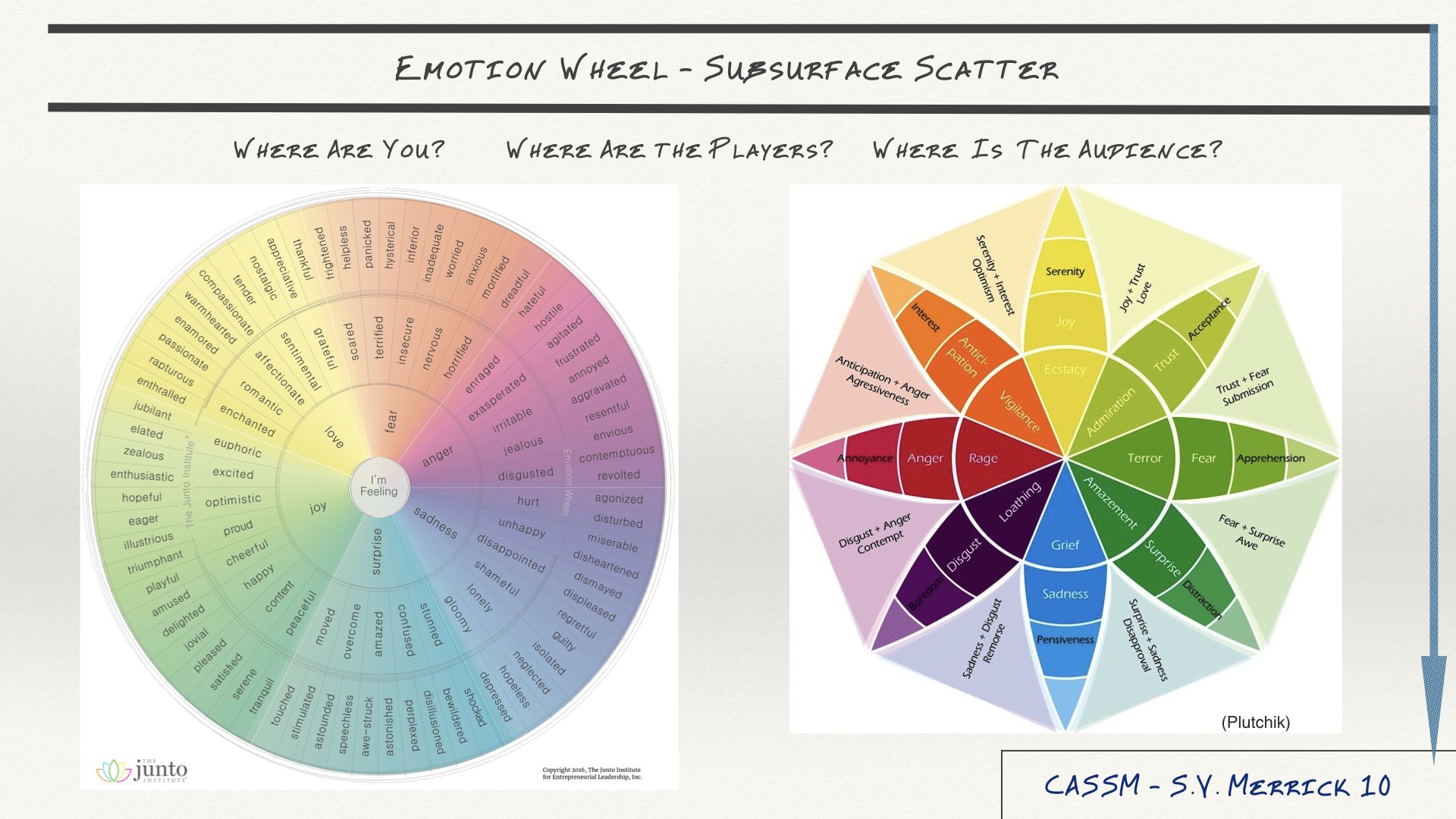cASSM
Creativity Arborization & Subsurface Scatter Map
CASSM is a living document I’ve been constructing for over a decade that examines the component blocks of narrative design and processes within loose social organizing principles. CASSM is an aggregation of headline ideas that describe deeply complex matters, the details of which are not described in the document. The purpose of the document is to provide threads to pull on rather than to elucidate detail. Read sequentially, CASSM represents a top down approach to social organization. Read back to front, it represents a bottom up approach, starting with the basic neural levers of the individual, proceeding to personality combinations that present cooperative opportunities to construct narratives. CASSM is not meant to be comprehensively understood; it is a set of sign posts meant to send the reader away to explore as soon as the imagination beckons. CASSM is a document of dots and lines for the reader to connect and color in missing elements according to their perspective. The principles outlined here are generally academic in origin intended to be viewed as elastic anchors for those with a playful sensibility - educational perhaps but not dogmatic. Creative discussions I have with collaborators are often guided by this framework as a means of flexible direction on a map that has innumerable possible destinations.
Some abstract definitions:
Arborization is a horticulture term used to describe how trees branch. The term was appropriated by neuroscience to describe the extensive branching of neurons. Arborization depicts how neurons extend connection to transmit, store, retrieve and “reconsolidate” information that originates from sensory transduction.
arborization in trees
arborization in neurons
Subsurface Scattering is the process by which sunlight protons pass through different elements and scatter depending on the elements’ properties. With respect to CASSM, ideas and information pass from one individual or group of individuals to another and are parsed, decimated and filtered according to the context of the transmission of ideas. Typically intention mutates instantly according to how proximity cues inform an instigator about their need requirements and perceived outcome probabilities. The purity of the communication of intention varies according to the integrity of the communicator. The communication is received, filtered through the cognitive biases of the audience, where it is masticated by emotional variables, calculated in “working memory” (present or short term memory) and stored for the long term according to priority. The ingested, scattered information is subsequently fed back according to the needs and interpretation of the audience. Art is a product of informational subsurface scatter; it is a reconfiguration of the artist’s perception that is once again scattered by the limitations of their chosen medium of expression. Superb art tends to scatter information without losing the information’s core essence - the diffusion effectively increases the composition’s surface area without diluting its meaning.
subsurface scatter through flesh















